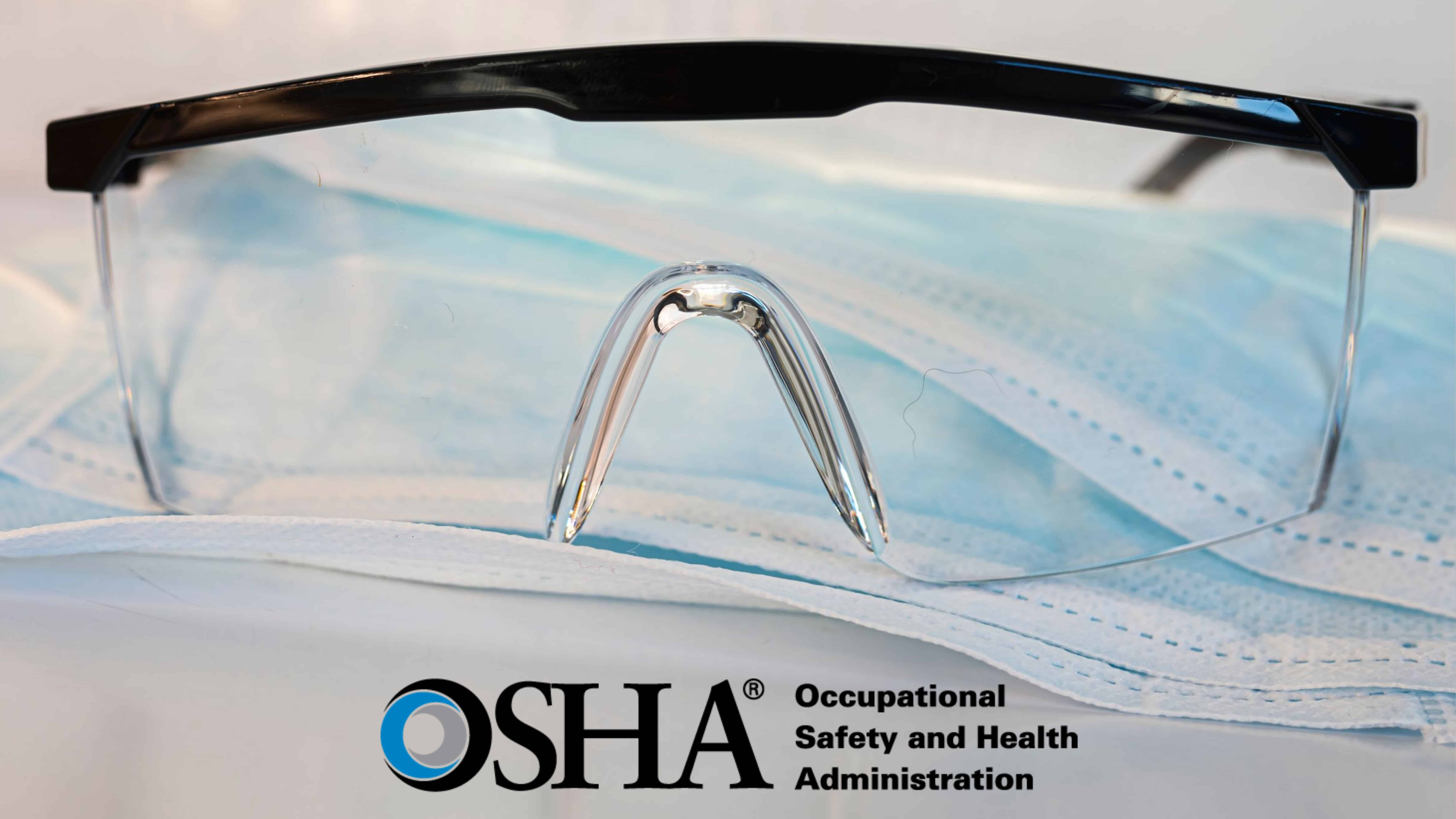What is OSHA PPE Healthcare?
Under the Occupational Safety and Health Act (OSHA), employers must provide workers with PPE, or personal protective equipment, that minimizes exposure to hazards. What type of PPE a healthcare employer must provide, depends upon the OSHA-regulated hazard to which an employee may be exposed. Types of OSHA PPE (personal protective equipment) in healthcare is discussed below.
OSHA PPE Healthcare: Gowns and Aprons
One type of OSHA PPE in healthcare is a gown or apron. PPE protective gowns and aprons protect the user from contamination of clothing with potentially infectious materials.
There are three factors that influence the selection of a gown or apron as PPE in healthcare. First is the purpose of use. Isolation gowns are generally the preferred PPE for clothing, but aprons occasionally are used where limited contamination is anticipated. If contamination of the arms can be anticipated, a gown should be selected. Gowns should fully cover the torso, fit comfortably over the body, and have long sleeves that fit snugly at the wrist.
The second factor is the material properties of the gown. Isolation gowns are made either of cotton or a spun synthetic material. Disposable gowns are generally made of a spun bound synthetic material. Reusable (washable) gowns are typically made of cotton or cotton-blend fabrics; gowns made of these fabrics can be safely laundered and reused if they are in good condition. Cotton and spun synthetic isolation gowns vary in their degree of fluid resistance. If fluid penetration is likely, a fluid resistant gown should be used.
The third and last factor concerns patient risks and whether a clean, rather than sterile gown, can be used. Sterile surgical gowns are used by surgeons and the surgical team for invasive procedures. Methods of sterilization for gowns include but are not limited to, radiation, steam, and ethylene oxide. Clean gowns, which have not been sterilized, are generally used for isolation.
OSHA PPE Healthcare: Gloves
Gloves are the most common type of PPE used in a healthcare settings. Most patient care activities require the use of a single pair of nonsterile gloves made of either latex, nitrile, or vinyl. However, because of allergy concerns, some facilities have eliminated or limited latex products, including gloves, and now use gloves made of nitrile or other material. Vinyl gloves are also frequently available and work well if there is limited patient contact. However, some gloves do not provide a snug fit on the hand, especially around the wrist, and therefore should not be used if extensive contact is likely.
Gloves should fit the user’s hands comfortably – they should not be too loose or too tight. They also should not tear or damage easily.
Other types of gloves include sterile surgical gloves and heavy duty gloves. Sterile surgical gloves are worn by other healthcare personnel who perform invasive patient procedures. Environmental services personnel often wear reusable heavy duty gloves made of latex or nitrile to work with caustic disinfectants when cleaning environmental surfaces.
If they become contaminated, gloves can become a means for spreading infectious materials to patients, employees, visitors, or environmental services. Therefore, employees who wear gloves should exercise safety measures that include:
◈ Working “from clean to dirty.” This is a basic principle of infection control, under which an employee touches clean body sites or surfaces before touching dirty or heavily contaminated areas.
◈ Limiting opportunities for touch contamination, by avoiding rubbing the nose or face with gloves that have been in contact with a patient, and by avoiding unnecessary touching of environmental surfaces with contaminated gloves. Surfaces such as light switches, and door and cabinet knobs can become contaminated if touched by soiled gloves.
◈ Changing gloves as needed. If gloves become torn or heavily soiled and additional patient care tasks must be performed, gloves must be changed before starting the task. Gloves should always be changed after use on each patient, and discarded in the nearest appropriate receptacle.
OSHA PPE Healthcare: Masks and Goggles
Masks and goggles help protect a healthcare employee’s face, nose, and mouth from splatter of body fluids. A combination of PPE types is available to protect all or parts of the face from contact with potentially infectious material. The selection of facial PPE in healthcare is determined by the isolation precautions required for the patient and/or the nature of the patient contact.
Masks should fully cover the nose and mouth and prevent fluid penetration. Masks should fit snugly over the nose and mouth. Goggles provide barrier protection for the eyes. Goggles should fit snugly over and around the eyes or personal prescription lenses. Goggles with anti-fog features will help maintain clarity of vision.







